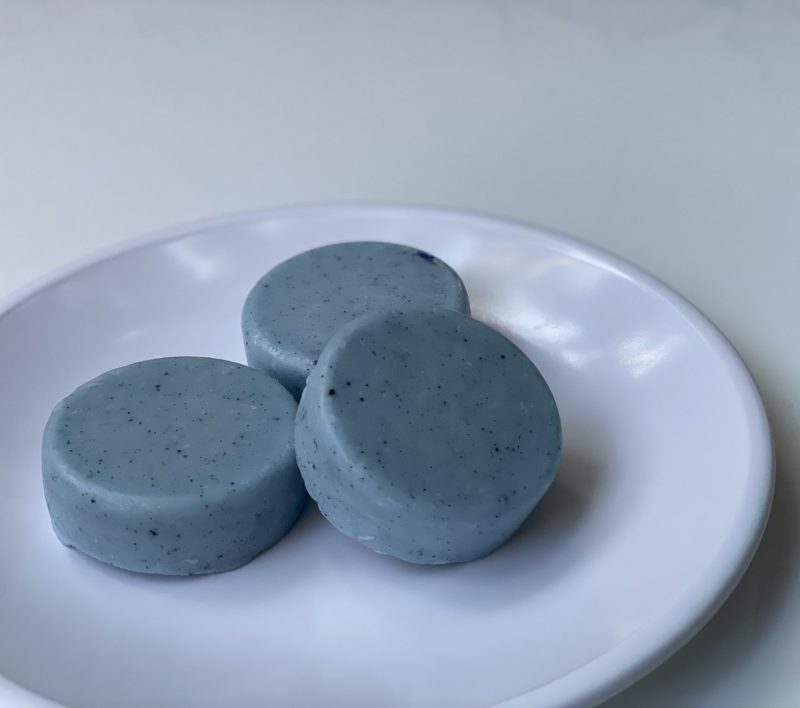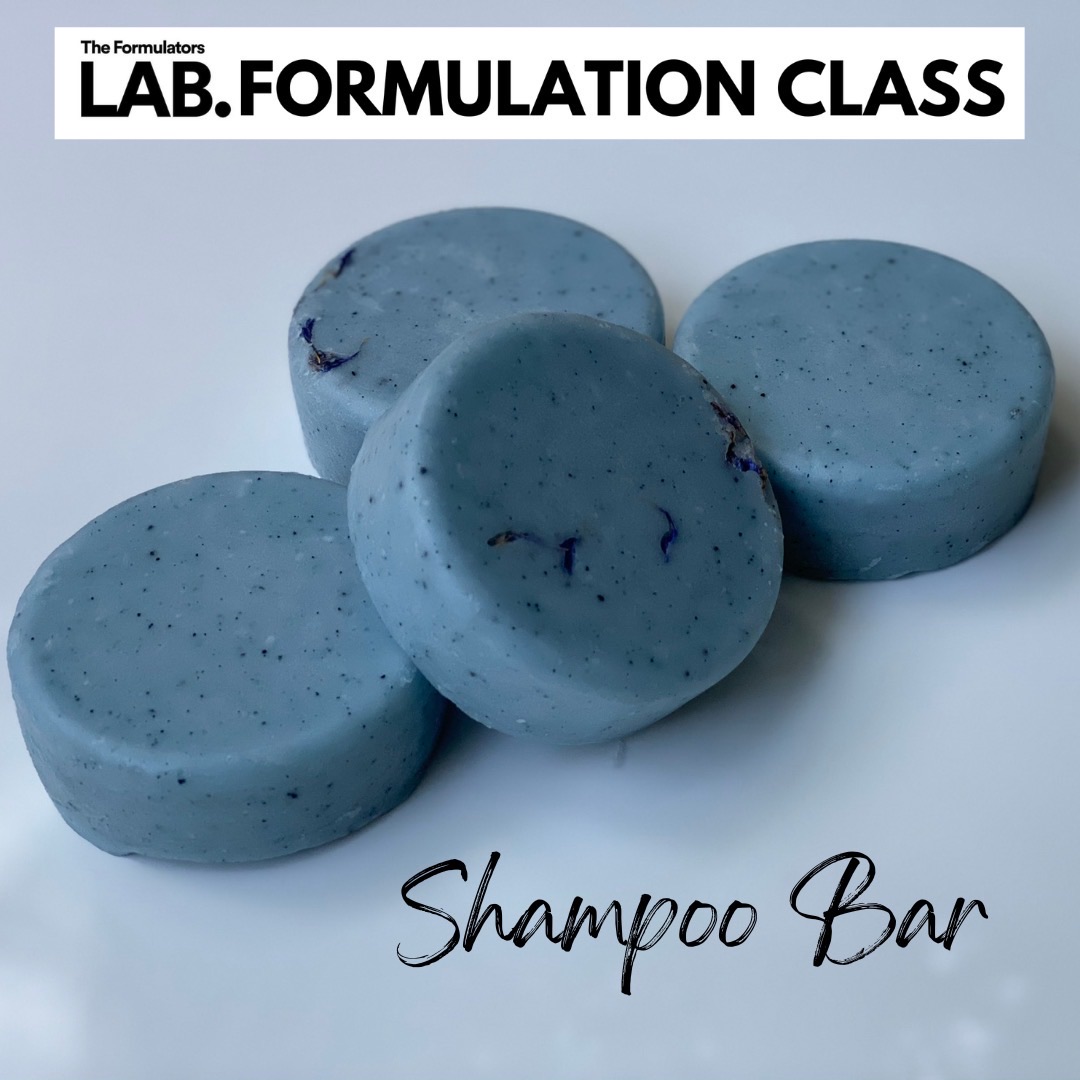
Formulating Shampoo Bars
There are many options for formulating shampoo bars. The backbone of the formulation are solid surfactants and choosing the ones that work best together. The procedure matters depending on the solid surfactant and the solid surfactant can be challenging to work with.
Shampoo bars are very popular. They’re filling the need and market for sustainable, green, biodegradable formulations and reducing plastic waste as there is no need for a plastic container. Very few plastic containers are recycled and most shampoo plastic bottles are not. The recycling centers are very discriminate on the plastic they recycle; the color and the size matters if it gets recycled or not. Learn more on formulating shampoo bars below.
How To Use a Shampoo Bar
- Wet the shampoo bar, gently glide the bar on the hair from the roots to the ends and repeat. Only a small amount is needed.
- Massage the scalp and hair to create a rich lather.
- Rinse hair thoroughly.
- Store bar is dry area and air dry.
Shampoo Bar with Solid Surfactants
Shampoo bars made with solid surfactants are not the same as cold process soap shampoo bars. Cold process soap is also a surfactant but shampoo bars are made with solid surfactants naturally derived and produced into powder, prill, noodle form.
The main solid surfactants used are SCI, SCS, and SLSA. A combination of two solid surfactants work better than just one. The combination of SCI and SLSA or SCI and SCS work well.
SCI = Sodium Cocoyl Isethionate
SCI is exceptionally mild and used for sensitive skin. It is mild to the skin and eyes. SCI imparts a soft after feel to the skin. It is high foaming and produces a creamy luxurious foam. It is derived from a renewable source, coconut oil and is completely biodegradable. SCI is good for hard and soft water. Hard water leaves product build up on the hair. Combines well with anionic, non-ionic and cationic surfactants. SCI is poorly soluble in water. It is soluble in surfactants. SCI is available in noodle or powder form. It is anionic.
Usage Rate: 2%-50%
Active Substance: minimum 84%
pH 4.5– 6.5 (10% aqueous)
SCS = Sodium Coco Sulfate
SCS is non-irritating and a gentle surfactant. It is naturally derived, from 100% coconut oil, a sodium salt of the sulfate ester of coconut alcohol. SCS comes in noodle-form. It disperses easily in water. It is a primary foamer, anionic, with thickening properties with creamier and denser foam. Combines well with anionic, non-ionic and cationic surfactants. Natural origin index of 1 in accordance of ISO 16128 guideline. Biodegradable. SCS is approved by Ecocert, COSMOS.
Usage Rate: 1%-40%, upto 70%
Active Substance: minimum 90%
pH 11 (10% aqueous)
SLSA = Sodium Lauryl Sulfoacetate
SLSA is a mild surfactant , sulphate-free, naturally and plant derived from coconut or palm oil. It has excellent flash foam. SLSA is anionic and comes in powder form. Combines well with anionic, non-ionic and cationic surfactants. SLSA is approved by EcoCert, COSMOS, NaTrue, Natural Products Association Approved.
Usage Rate: 1%-50%, upto 70%
Active Substance: minimum 65%
pH 6.3 (10% aqueous)
Building The Formula
After choosing the solid surfactants as the core part of the formula, formulations can be developed with plant oils, plant butters, fatty alcohols, liquid surfactants (anionic, amphoteric, non-ionic and cationic), solubilizers, extracts, hydrolyzed protein, glycerin, refatting agents, preservative, color and essential oils.
Shampoo Bar from Butters and Oils
Shampoo bars can be made from plant butters, plant oils and a surfactant. They can weigh the hair down and leave a build up on the hair since they are so high in butters and oils.
Shampoo Bar from Cold Process Soap
Shampoo bars can be made from cold process soap. They can be made with butters to be more moisturizing. The pH in cold process soap bar is high, around 9-10. These can also weigh the hair down and leave a build up on the hair as they are very high in oils.
Shampoo Bar Formulation Class
Take this LAB Class! It is an in-depth Formulation Class on Shampoo Bars. The class reviews the ingredients and all the options for making shampoo bars. The shampoo bar formula is for most hair types. It also covers customizing shampoo bars for different types of hair and the simple adjustments to the ingredients.
These shampoo bars clean the hair, leave no residue, soften the hair and add a lot of shine to the hair. Full instruction and video for you to watch as many times as needed, demonstrating how to formulate and make shampoo bars. Reviewing the pros and cons of the ingredients, sizes for shampoo bars, pH of the shampoo bar and creating a hard shampoo bar. Included in the class is two shampoo bar formulas with the procedures. Plus, an essential blend formula with a nice clean scent that is unisex.
You might also like




Informative
Very informative! Thanks Joan
Thank You!